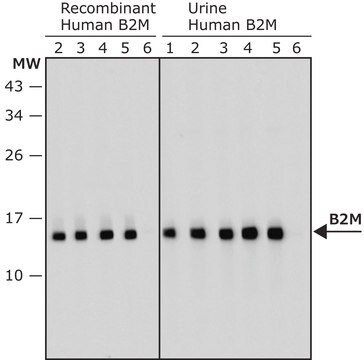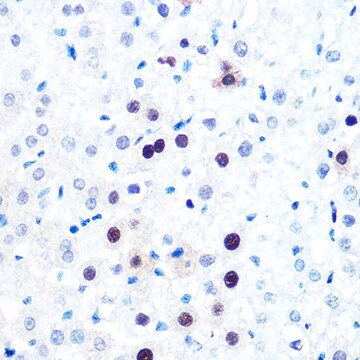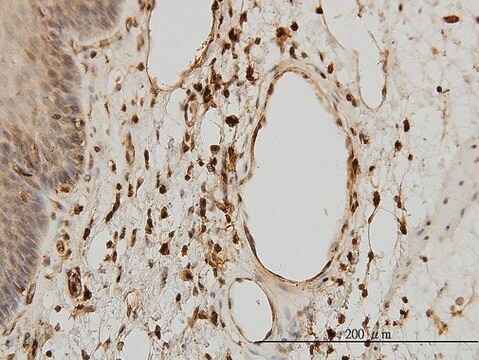SAB4200855
Anti-Cytokeratin Peptide 18 antibody, Mouse monoclonal
clone CY-90, purified from hybridoma cell culture
Sinónimos:
Anti-CK18
About This Item
Productos recomendados
forma del anticuerpo
purified from hybridoma cell culture
Nivel de calidad
tipo de anticuerpo
primary antibodies
clon
CY-90, monoclonal
formulario
liquid
reactividad de especies
human
concentración
~1 mg/mL
técnicas
immunoblotting: suitable
immunohistochemistry: 10-20 μg/mL using heat-retrieved formalin-fixed, paraffin-embedded human placenta sections
isotipo
IgG1
Nº de acceso UniProt
Condiciones de envío
dry ice
temp. de almacenamiento
−20°C
modificación del objetivo postraduccional
unmodified
Descripción general
Especificidad
Aplicación
Acciones bioquímicas o fisiológicas
Cytokeratin 18 is a member of the type I subfamily. Cytokeratin pair 8/18 forms the IF scaffold predominantly in simple epithelia such as the liver and pancreas. They have major role in the mechanical support of the cell, protein biosynthesis, protection from apoptosis, regulation of cell cycle progression, motility and organelle transport.3
Cytokeratins over and misexpression are linked to various diseases and more than 60 different disorders (termed as keratinopathies) have been linked to inherited cytokeratin changes. Cytokeratins (such as cytokeratin 18) serve as serum markers for malignant and non-neoplastic disorders and mutation of human cytokeratin 18 has also been associated with liver diseases.7
Forma física
Almacenamiento y estabilidad
Cláusula de descargo de responsabilidad
¿No encuentra el producto adecuado?
Pruebe nuestro Herramienta de selección de productos.
Código de clase de almacenamiento
12 - Non Combustible Liquids
Clase de riesgo para el agua (WGK)
WGK 1
Punto de inflamabilidad (°F)
Not applicable
Punto de inflamabilidad (°C)
Not applicable
Certificados de análisis (COA)
Busque Certificados de análisis (COA) introduciendo el número de lote del producto. Los números de lote se encuentran en la etiqueta del producto después de las palabras «Lot» o «Batch»
¿Ya tiene este producto?
Encuentre la documentación para los productos que ha comprado recientemente en la Biblioteca de documentos.
Nuestro equipo de científicos tiene experiencia en todas las áreas de investigación: Ciencias de la vida, Ciencia de los materiales, Síntesis química, Cromatografía, Analítica y muchas otras.
Póngase en contacto con el Servicio técnico








